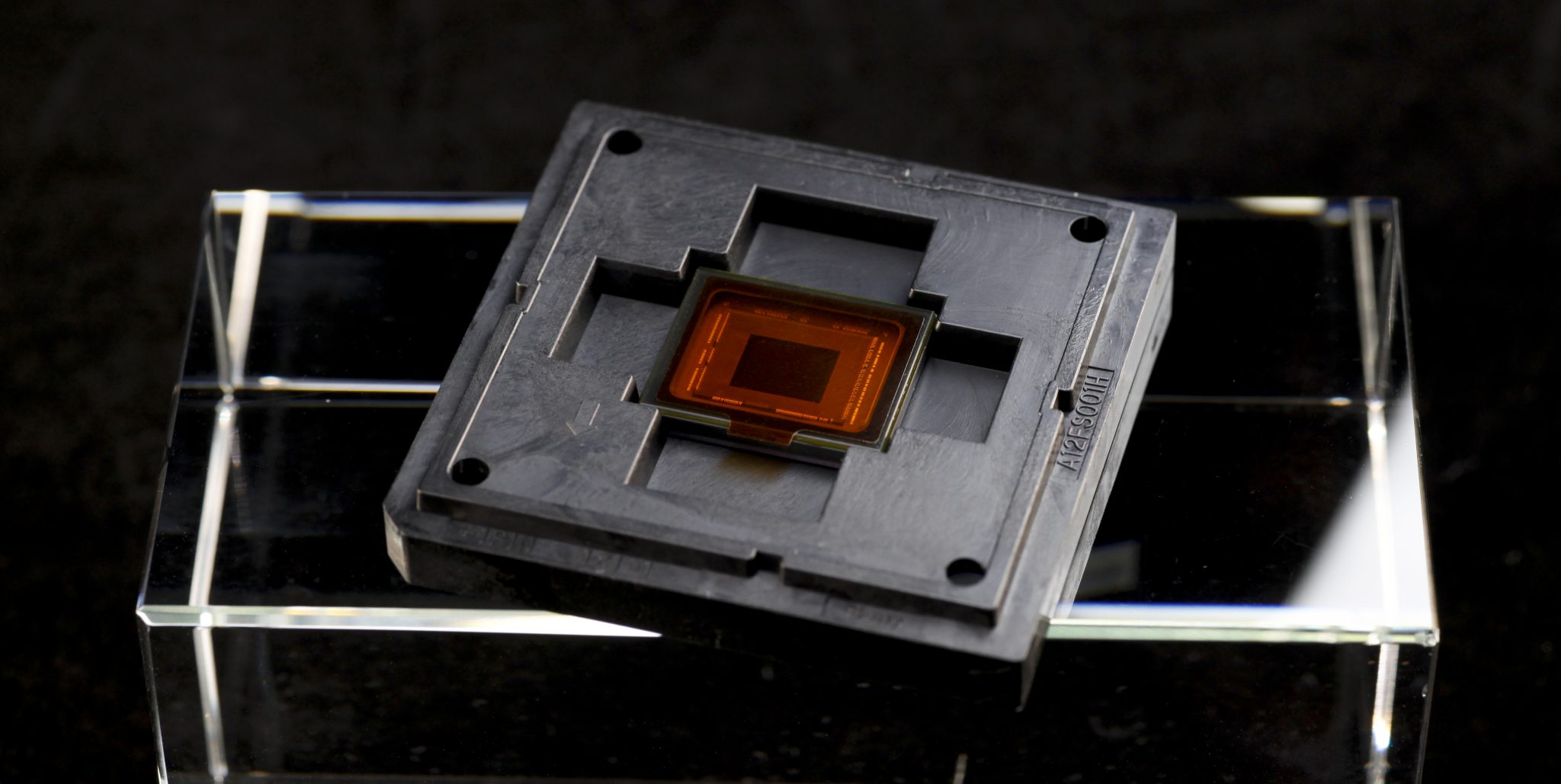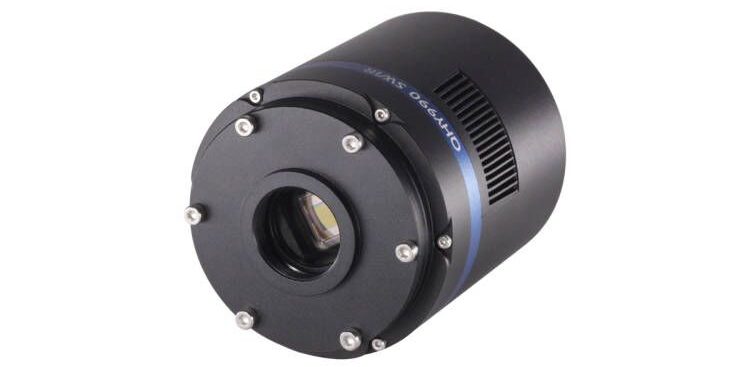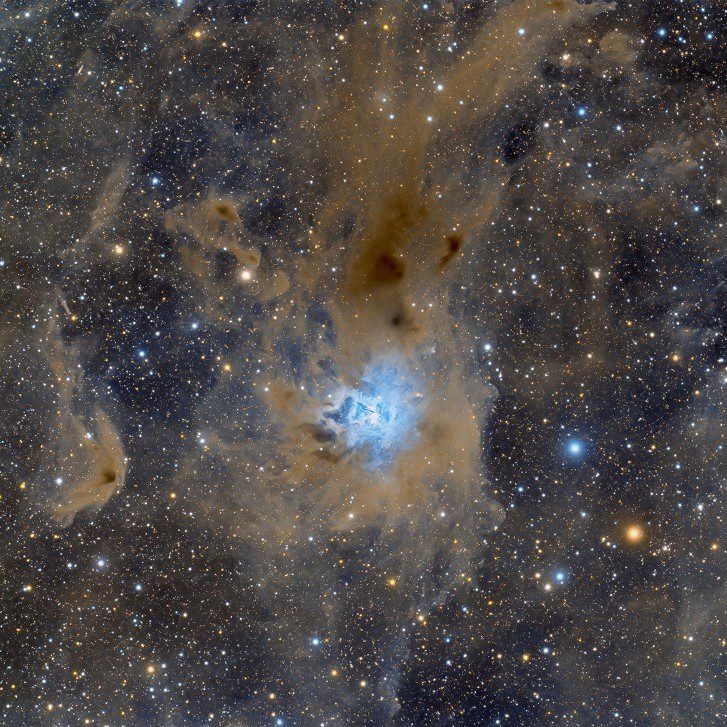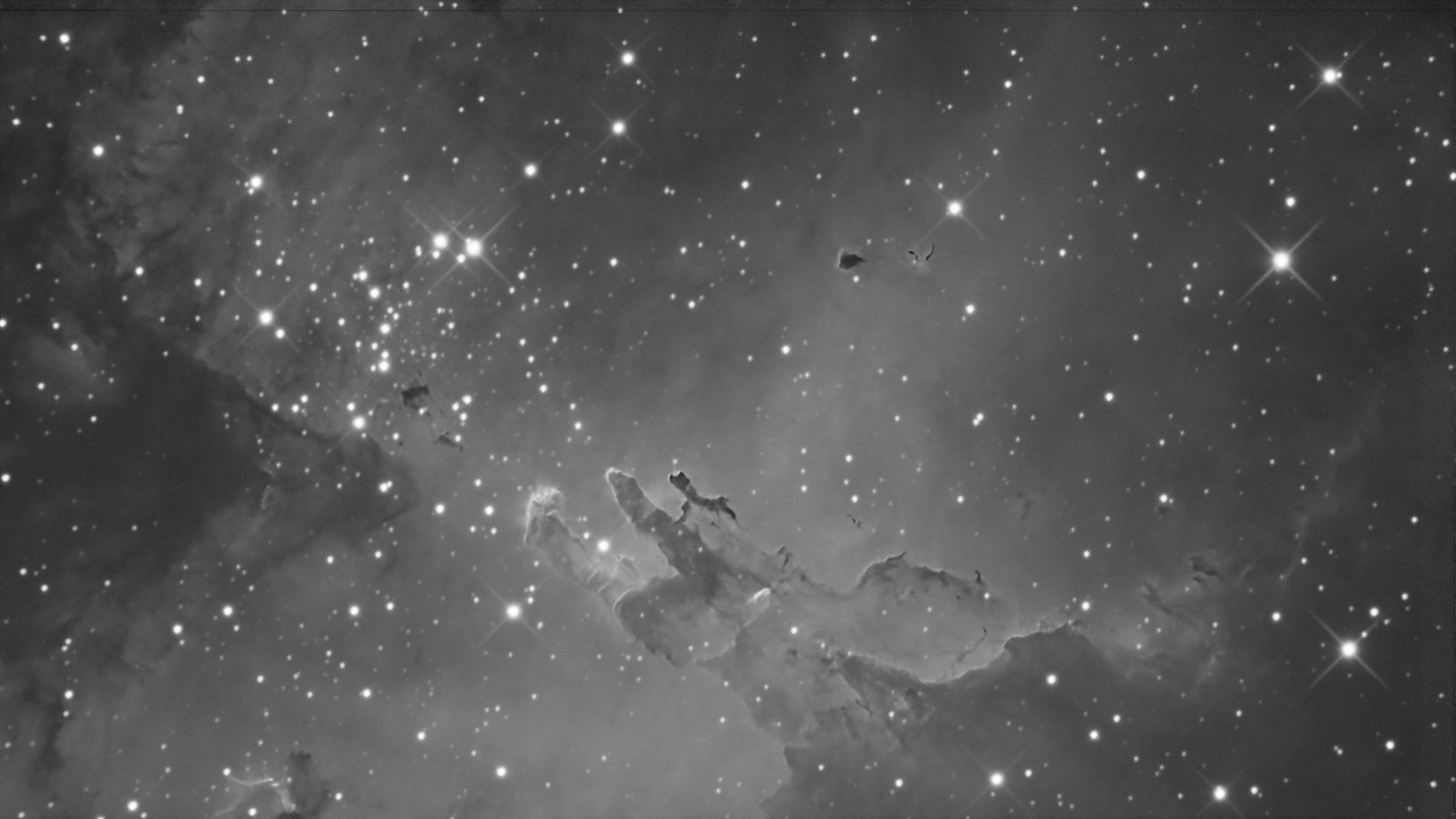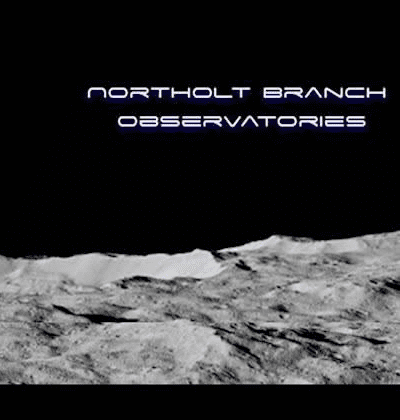In scientific research and industrial applications, cooling capacity and dark current levels are crucial parameters for evaluating scientific-grade cameras. There are many factors contributing to dark current generation, but for optical sensors, temperature is the most significant. Higher temperatures result in greater dark current. Controlling temperature is essential for suppressing dark current, especially for short-wave infrared sensors made with indium gallium arsenide (InGaAs) materials, which have significantly higher dark current than silicon-based visible light sensors. This makes dark current reduction even more critical.
In recent years, Sony has introduced a series of high-resolution short-wave infrared sensors with small pixels using copper interconnect technology. Examples include the 1.3-megapixel IMX990 and the 5-megapixel IMX992. Due to their excellent image quality, these sensors have found applications in various fields.
Based on the characteristics of the sensor’s dark current, QHYCCD has developed its own cooling and sealing technology for its short-wave infrared camera series. This technology significantly reduces the sensor’s dark current level, enabling excellent imaging performance in scientific imaging, low-light detection, astronomical observation, and biological imaging applications.
It’s important to note that QHYCCD’s cooling and sealing technology does not directly utilize Sony’s built-in semiconductor cooling for short-wave infrared sensors. Instead, QHYCCD applies its accumulated cooling technology from the astronomical camera field to achieve deeper cooling of Sony’s sensors. This results in a greater temperature difference, significantly reducing dark current noise and achieving scientific-grade imaging quality.
In this aspect, the QHY990 series cameras are distinctly different from most industrial short-wave infrared cameras that use built-in semiconductor-cooled sensors. Cameras with built-in semiconductor cooling typically achieve temperature differences of 15°C or 25°C below ambient temperature. In contrast, the QHY990 can achieve a temperature difference of up to 35°C below ambient temperature, demonstrating superior cooling capabilities.
What effect does this cooling temperature difference bring? At an ambient temperature of 25℃, we compared and analyzed the images shot with the QHY990 camera when the sensor’s working temperatures were 10℃ and -10℃ respectively.
We can look at the dark current data at these two temperatures based on the curve graph:
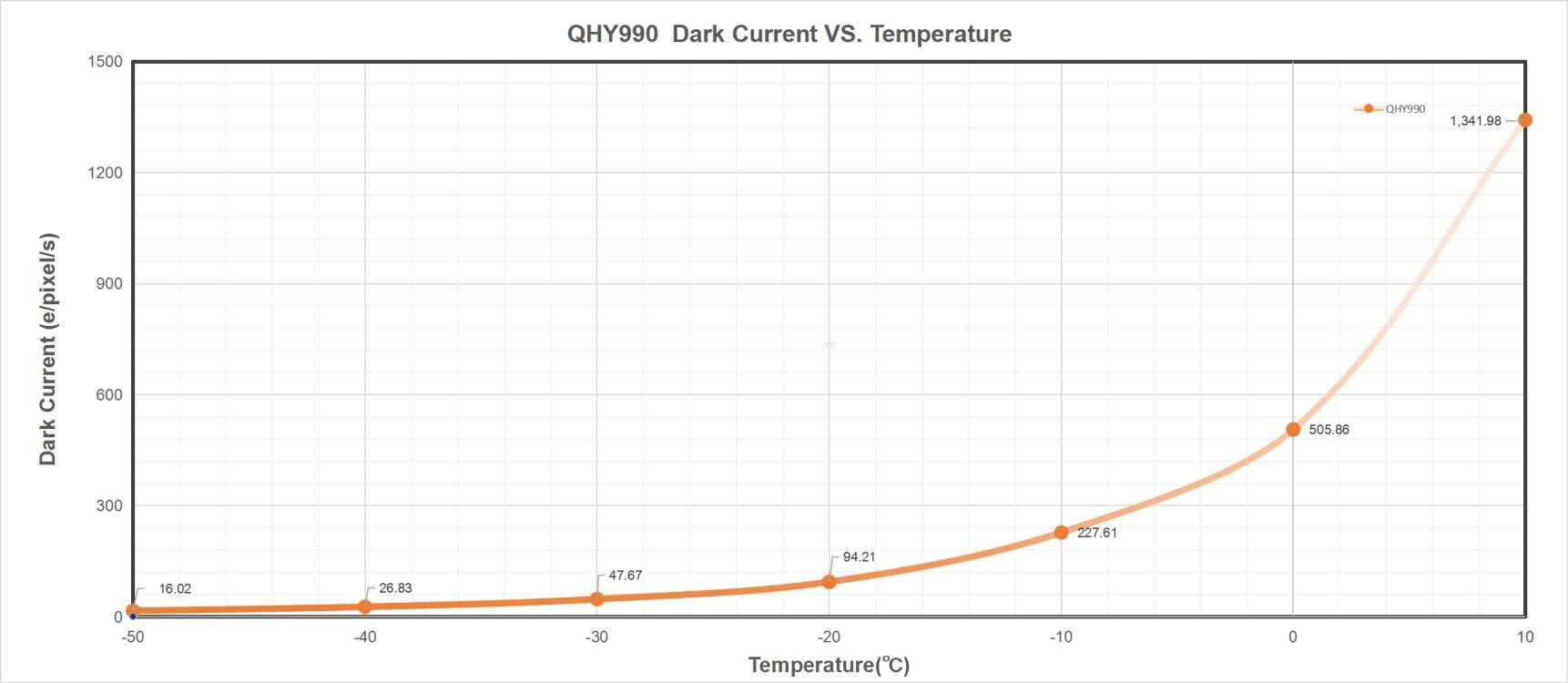 (QHY990 Dark Current vs. Temperature )
(QHY990 Dark Current vs. Temperature )
At +10℃, the camera’s dark current is 1477.26e-/pixel/s, while at -10℃, the dark current is 250.55e-/pixel/s. Assuming an exposure time of 3s, we can calculate that the dark current baseline at +10℃ is 4431.78e-, and at -10℃ it’s 751.65e-. Even with just a 3s exposure, the difference in read noise caused by dark current at the different temperatures of +10℃ and -10℃ is quite significant.
To more intuitively demonstrate the impact of cooling on image quality and dark current performance, we captured some images:
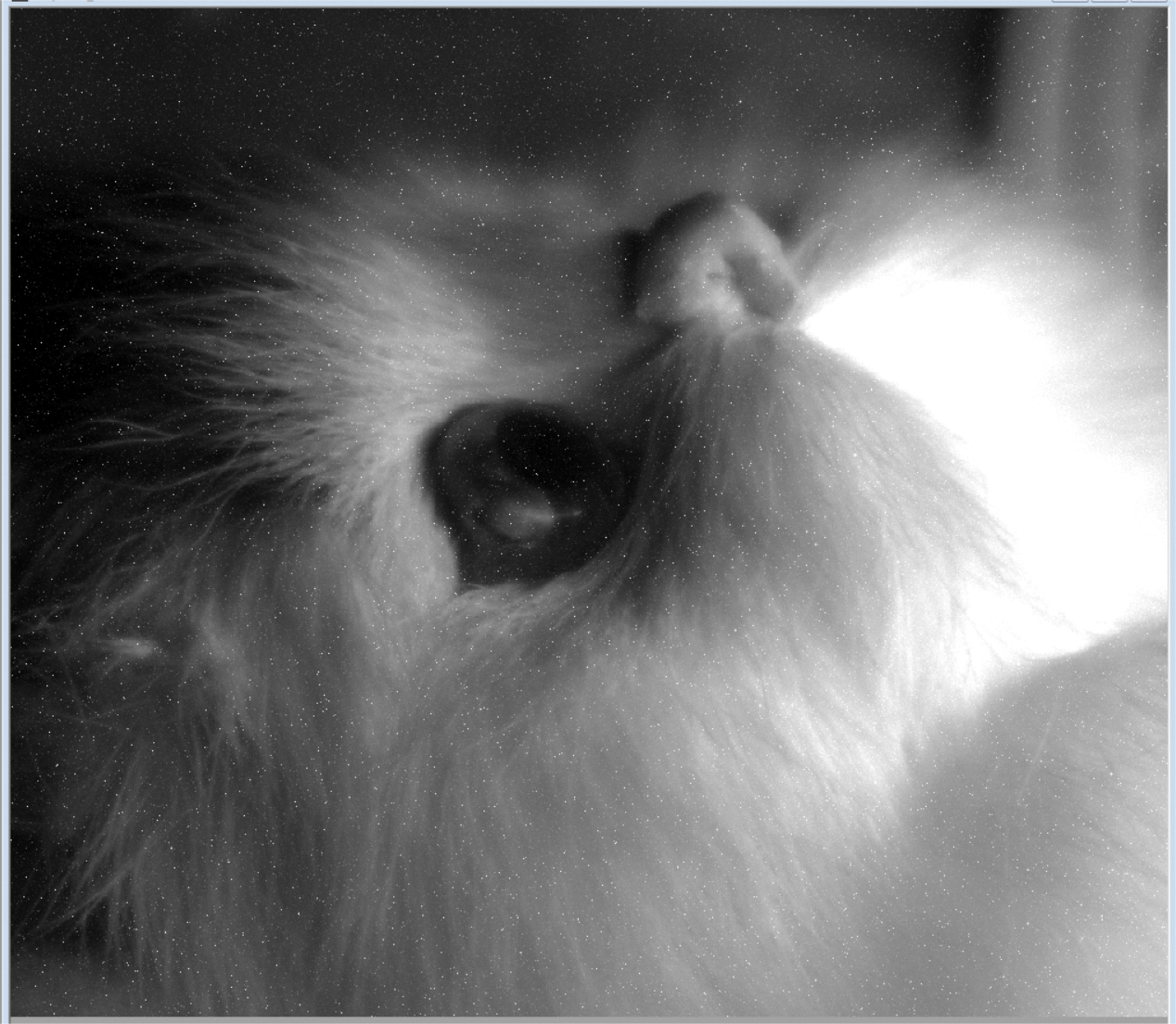 (testing image under +10℃, 3s exposure)
(testing image under +10℃, 3s exposure)
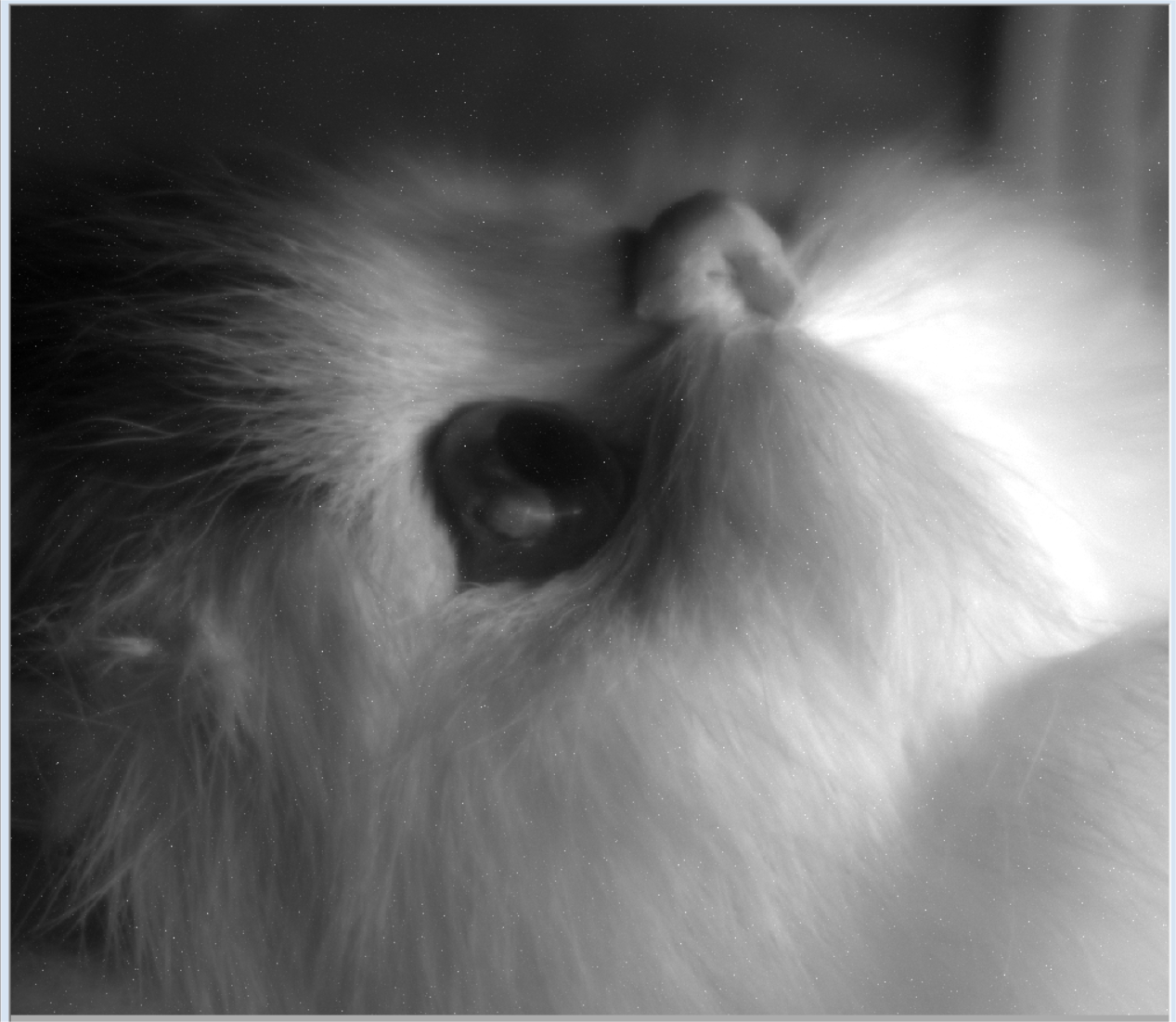 (testing image under -10℃, 3s exposure)
(testing image under -10℃, 3s exposure)
Two images were taken under low light conditions, with Gain=0 and 3s exposure. The first image was taken with the cooling temperature set to 10℃, while the second image was taken with the cooling temperature set to -10℃. It’s evident that the noise in the first image is significantly more than the second one.
In many scientific fields, such as biological fluorescence imaging and environmental monitoring, there’s often a need to capture and process even weaker light, which demands stricter image quality requirements from cameras. Let’s look at the comparison of images taken by QHY990 in an even darker environment, at working temperatures of +10℃ and -10℃:
 (testing image under +10℃, 200ms exposure)
(testing image under +10℃, 200ms exposure)
 (testing image under -10℃, 200ms exposure)
(testing image under -10℃, 200ms exposure)
It’s clear that the image taken at +10℃ is severely affected by dark current, with a lot of noise, while the image at -10℃ is relatively clean. To further observe the difference in noise distribution between the two images, we can look at the histogram of the dark frame bias:
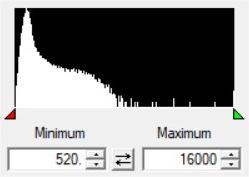 (dark bias histogram under +10℃, 200ms exposure)
(dark bias histogram under +10℃, 200ms exposure)
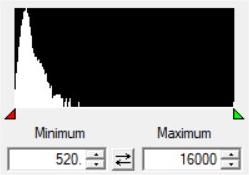 (dark bias histogram under -10℃, 200ms exposure)
(dark bias histogram under -10℃, 200ms exposure)
From the histogram distribution: The noise at -10℃ is concentrated, which is very beneficial for scientific image analysis. In contrast, the noise at +10℃ is more dispersed with a wider range, already severely affected by dark current noise.
Conclusion: Through image comparison and data analysis verification, it’s confirmed that temperature control has a significant impact on dark current. Compared to the data at +10℃ cooling temperature, the QHY990’s dark current level and image performance at -10℃ are much better. At lower cooling temperatures, the reduction in dark current noise not only improves the image signal-to-noise ratio but also enhances imaging effects under low light conditions. The QHY990 camera, with its 35℃ temperature difference capability, demonstrates cooling performance and overall quality that can meet professional requirements in multiple fields.


